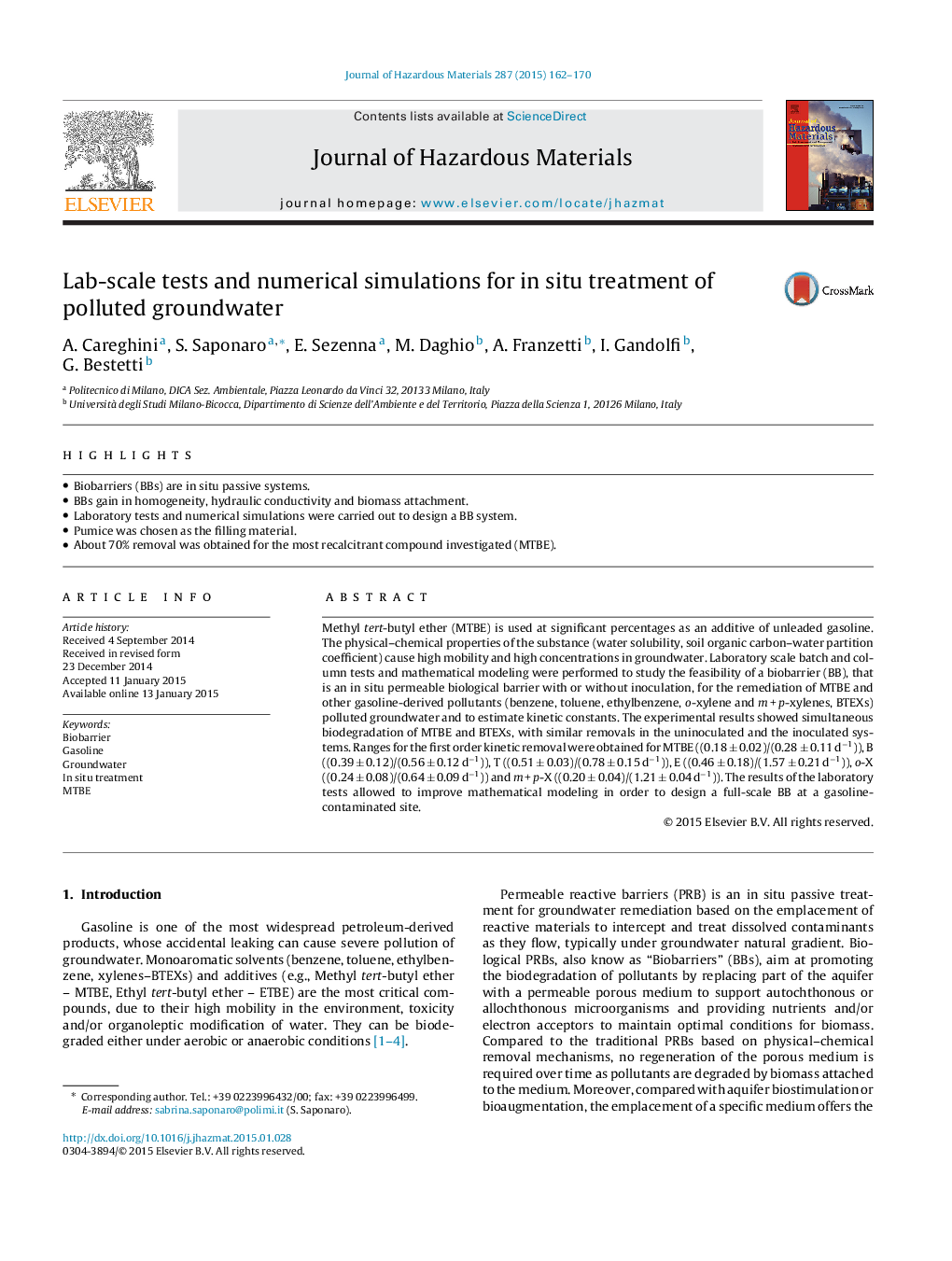| Article ID | Journal | Published Year | Pages | File Type |
|---|---|---|---|---|
| 576357 | Journal of Hazardous Materials | 2015 | 9 Pages |
Abstract
Methyl tert-butyl ether (MTBE) is used at significant percentages as an additive of unleaded gasoline. The physical-chemical properties of the substance (water solubility, soil organic carbon-water partition coefficient) cause high mobility and high concentrations in groundwater. Laboratory scale batch and column tests and mathematical modeling were performed to study the feasibility of a biobarrier (BB), that is an in situ permeable biological barrier with or without inoculation, for the remediation of MTBE and other gasoline-derived pollutants (benzene, toluene, ethylbenzene, o-xylene and m + p-xylenes, BTEXs) polluted groundwater and to estimate kinetic constants. The experimental results showed simultaneous biodegradation of MTBE and BTEXs, with similar removals in the uninoculated and the inoculated systems. Ranges for the first order kinetic removal were obtained for MTBE ((0.18 ± 0.02)/(0.28 ± 0.11 dâ1)), B ((0.39 ± 0.12)/(0.56 ± 0.12 dâ1)), T ((0.51 ± 0.03)/(0.78 ± 0.15 dâ1)), E ((0.46 ± 0.18)/(1.57 ± 0.21 dâ1)), o-X ((0.24 ± 0.08)/(0.64 ± 0.09 dâ1)) and m + p-X ((0.20 ± 0.04)/(1.21 ± 0.04 dâ1)). The results of the laboratory tests allowed to improve mathematical modeling in order to design a full-scale BB at a gasoline-contaminated site.
Related Topics
Physical Sciences and Engineering
Chemical Engineering
Chemical Health and Safety
Authors
A. Careghini, S. Saponaro, E. Sezenna, M. Daghio, A. Franzetti, I. Gandolfi, G. Bestetti,
